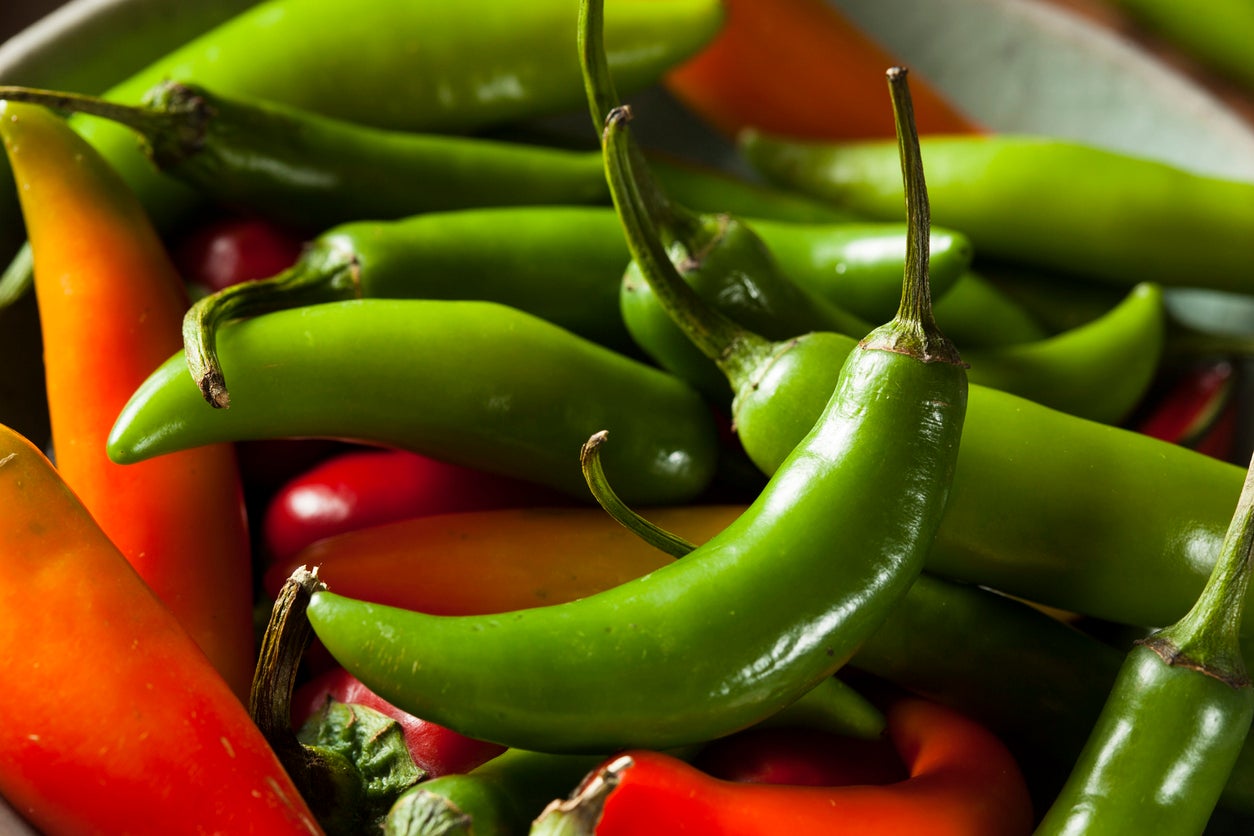Serrano Pepper Plant Info – How To Grow Serrano Peppers At Home


Is your palate hungry for something a little spicier than a jalapeno pepper, but not as mind-altering as the habanero? You might want to try the serrano pepper. Growing these medium-hot chili peppers isn't hard. Plus, the serrano pepper plant is quite prolific, so you won't need to devote much garden space to get decent yields.
What are Serrano Peppers?
Originating in the mountains of Mexico, the serrano is one of the spicy hot types of chili peppers. Their hotness ranges between 10,000 and 23,000 on the Scoville heat scale. This makes the serrano about twice as hot as the jalapeno.
Although nowhere near as hot as the habanero, the serrano still packs a punch. So much so that gardeners and home cooks are advised to wear disposable gloves when picking, handling, and cutting serrano peppers.
Many serrano peppers mature between 1 and 2 inches (2.5-5 cm.) in length, but larger varieties grow to be twice that size. The pepper is narrow with a slight taper and a rounded tip. Compared to other chilies, serrano peppers have a thin skin, which makes them an excellent choice for salsas. They are dark green in color, but if allowed to mature they can turn red, orange, yellow, or brown.
How to Grow Serrano Peppers
In colder climates, start serrano pepper plants indoors. Transplant to the garden only after night time temperatures stabilize above 50 degrees F. (10 C.), as low soil temperatures can stunt the growth and root development of chilies, including the serrano pepper. Growing them in a sunny location is recommended.
Like most varieties of peppers, serrano plants grow best in rich, organic soil. Avoid fertilizers with a high nitrogen content, as this can lower fruit output. In the garden, space each serrano pepper plant 12 to 24 inches (31-61 cm.) apart. Serrano peppers like slightly acidic pH (5.5 to 7.0) soil. Serrano peppers are container friendly too.
What to Do with Serrano Peppers
Serrano peppers are quite prolific and it's not unheard of to harvest as much as 2.5 pounds (1 kg.) of chilies per serrano pepper plant. Deciding what to do with serrano peppers is easy:
Gardening tips, videos, info and more delivered right to your inbox!
Sign up for the Gardening Know How newsletter today and receive a free copy of our e-book "How to Grow Delicious Tomatoes".
- Fresh – The thin skin on serrano chilies makes them ideal ingredients for spicing up salsa and pico de gallo recipes. Use them in Thai, Mexican, and southwestern dishes. Refrigerate fresh serrano peppers to increase their shelf life.
- Roast – Seed and remove the veins before roasting to temper their heat. Roasted serrano peppers are great in marinades to add a spicy zest to meats, fish, and tofu.
- Pickled – Add serrano peppers to your favorite pickle recipe to turn up the heat.
- Dried – Use a food dehydrator, sun, or oven dry to preserve serrano peppers. Use dried serrano peppers in chili, stew, and soup to add flavor and zest.
- Freeze – Slice or chop high-quality fresh serrano peppers with or without the seeds and freeze immediately. Thawed peppers tend to be mushy, so it's best to reserve frozen serrano chilies for cooking.
Of course, if you're an aficionado of hot peppers and are growing them to challenge your friends to a hot pepper eating contest, here's a tip: The color of the veins in a serrano pepper can indicate how potent that pepper will be. Yellowish orange veins hold the most heat!

Laura Miller has been gardening all her life. Holding a degree in Biology, Nutrition, and Agriculture, Laura's area of expertise is vegetables, herbs, and all things edible. She lives in Ohio.
-
 Looking For Plants To Give You The Soft And Fuzzies? Try These 5 Fuzzy Leaf Plant Options
Looking For Plants To Give You The Soft And Fuzzies? Try These 5 Fuzzy Leaf Plant OptionsLovers of texture, drama, silver foliage and tactile plants will adore these special sensory garden additions. These fuzzy leaf plant options will leave you all aglow
By Susan Albert
-
 Get Ready For A Summer Of Hummers! Grow These Full Sun Hummingbird Plants and Flowers
Get Ready For A Summer Of Hummers! Grow These Full Sun Hummingbird Plants and FlowersIf you’re lucky enough to enjoy a sunny backyard, make sure you are maxing out on your pollinator opportunities and grow these full sun hummingbird plants and flowers
By Tonya Barnett